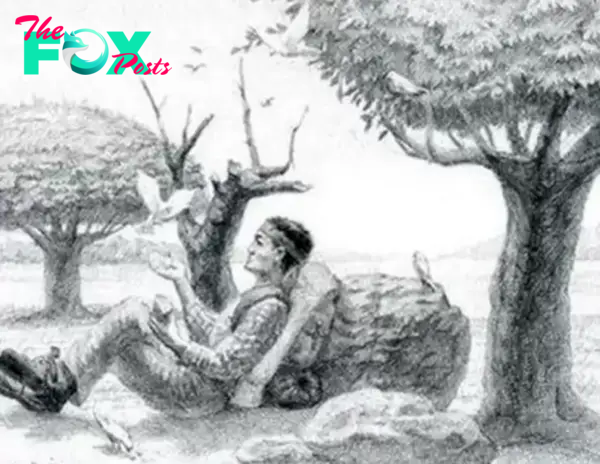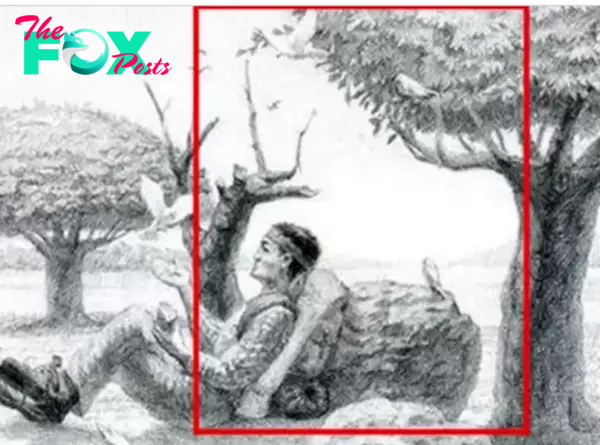Lifestyle
Optical illusion. Can You Find The Hidden Horse Within 8 Seconds
Natural optical illusions fascinate us because they test our ability to perceive our surroundings.

It also provides important insights into how the human brain works.
Researchers have been studying how optical illusions affect the human brain for years, and they have devised a number of experiments that demonstrate how different parts of the brain respond to optical illusions…

Now is the time to put your observation skills to the test. Take this Horse optical illusion test and see if you can find a hidden Horse in 8 seconds.
If you initially believe there isn’t a Horse in the hidden image, take a closer look. Examine the image carefully…

Trypophobia
Trypophobia is a relatively lesser-known psychological phenomenon characterized by an intense aversion or fear of clustered patterns of small holes, bumps, or irregular shapes. While not officially recognized as a distinct mental disorder in the Diagnostic and Statistical Manual of Mental Disorders (DSM-5), trypophobia has gained attention in recent years due to its prevalence and the emotional distress it can cause in individuals who experience it.
People with trypophobia often react strongly to images or objects that exhibit rePetitive and closely packed small holes, such as lotus seed pods, honeycombs, or certain types of coral. The term “trypophobia” itself is derived from the Greek words “trypo,” meaning “hole,” and “phobia,” indicating an irrational fear. It’s important to note that trypophobia is not limited to specific shapes or textures; it encompasses a wide range of stimuli, and triggers can vary from person to person.
The fear response associated with trypophobia may manifest as feelings of discomfort, anxiety, nausea, or even panic attacks. Some individuals may go to great lengths to avoid situations or objects that could trigger their trypophobia, impacting their daily lives. While the exact cause of trypophobia remains unclear, researchers speculate that it may be linked to evolutionary factors, as some dangerous Animals and plants exhibit similar patterns in nature.
Social media and the internet have played a significant role in popularizing trypophobia, with numerous online communities sharing images and discussions related to this phenomenon. The widespread dissemination of trypophobic triggers has led to increased awareness and recognition of this condition. However, it’s crucial to approach the topic with sensitivity, as exposure to triggering images can genuinely distress individuals who experience trypophobia.
Despite its prevalence, trypophobia remains an area of ongoing research, and professionals in psychology and psychiatry continue to explore its origins, manifestations, and potential treatments. Understanding trypophobia can contribute to more compassionate and informed discussions about mental Health, promoting empathy and support for those who grapple with this unique fear.
-

 Lifestyle3m ago
Lifestyle3m agoLook to the Western Sky: Starbucks is Dropping ‘Wicked’ Merch this November
-

 Lifestyle8m ago
Lifestyle8m agoWhere the Billionaires Live: Inside the World’s Most Expensive Gated Communities
-

 Lifestyle38m ago
Lifestyle38m agoSalman Khan takes a swipe at Ashneer Grover's brand ambassador comment | The Express Tribune
-

 Lifestyle38m ago
Lifestyle38m agoWATCH: Allu Arjun's film 'Pushpa 2' trailer unveiled | The Express Tribune
-

 Lifestyle4h ago
Lifestyle4h agoMichael Jordan Unveils Contract Behind Tragic Mishap of Iconic Release 12 Years Ago.Linh
-

 Lifestyle5h ago
Lifestyle5h agoCelebrities Who Have Dined at Jay Fai
-

 Lifestyle5h ago
Lifestyle5h agoMCU's 'perfidious' witch | The Express Tribune
-

 Lifestyle5h ago
Lifestyle5h agoWatch: Bohemia meets Attaullah Esakhelvi in London, shows utmost respect | The Express Tribune


















